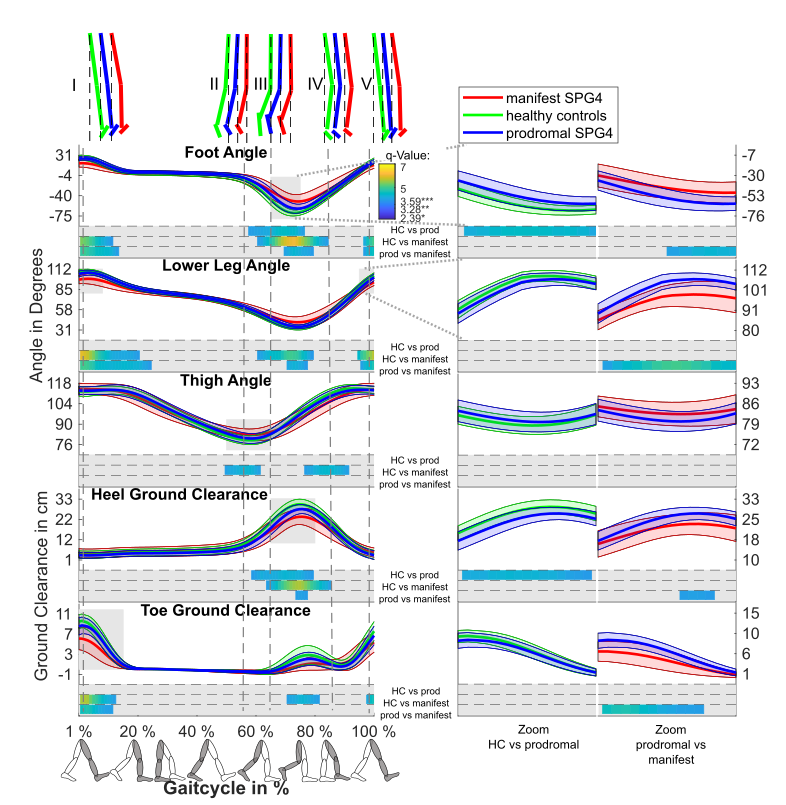In this study, we identified specific movement abnormalities in prodromal subjects with hereditary spastic paraplegia type 4, before the manifestation of spastic gait. Specific gait changes could be quantified in recordings in a movement laboratory during gait. The gait alterations mainly occur during the swing phase and in the most distal joints of the leg, which can be explained by the length-dependent degeneration of the cortico-spinal tract. We identified gait characteristics that serve as direct accessible biomarkers and correlate with other disease-related markers such as neurofilament light chain or central motor conduction times.
Laßmann C, Ilg W, Schneider M, Völker M, Haeufle DFB, Schüle R, Giese M, Synofzik M, Schöls L, Rattay TW. Specific Gait Changes in Prodromal Hereditary Spastic Paraplegia Type 4: preSPG4 Study. Mov Disord. 2022 Dec;37(12):2417-2426. doi: 10.1002/mds.29199. [Epub 2022 Aug 29. PMID: 36054444.]






